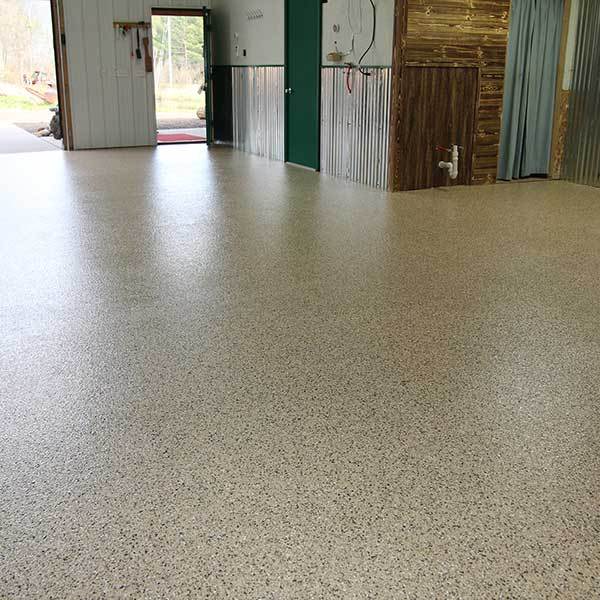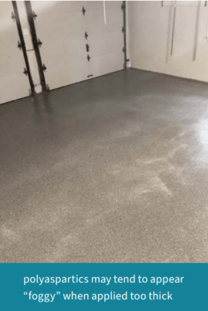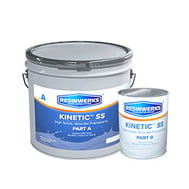
Polyaspartics offer a number of advantages, however they can be challenging to work with in hot and humid conditions.
 UV stability, superior chemical and abrasion resistance, and fast cure times are all hallmarks of what the industry has come to know as polyaspartic coating technology. Polyaspartics incorporate a polyaspartic resin with an isocyanate-based curing agent that, depending on the formulation, may be highly sensitive to elevated ambient humidity levels. This is also the case for many (nearly all) other types of urethane coatings.
UV stability, superior chemical and abrasion resistance, and fast cure times are all hallmarks of what the industry has come to know as polyaspartic coating technology. Polyaspartics incorporate a polyaspartic resin with an isocyanate-based curing agent that, depending on the formulation, may be highly sensitive to elevated ambient humidity levels. This is also the case for many (nearly all) other types of urethane coatings.
When used as a floor coating, polyaspartics cure faster in higher humidity situations. For especially warm and humid climates, this can make some materials challenging to work with and prone to certain issues such as an uneven film, roller marks or even a cloudy finish if the material is applied too thick.
So how can you help set your team up for success when working with polyaspartics in the summer?
- Keep Cool: When working with Polyaspartics, the number one tip we usually provide is for installers to be sure to keep the material cool. You can achieve this by keeping the coating material inside a climate controlled environment or even a large cooler. The absolute worst place to store polyaspartics in the summer is in the back of a truck or trailer where it gets as hot as possible. It's a simple and easily implemented precaution. Hot Material+hot floor+hot day = disaster.
 Use the Right Formula: Not all polyaspartics are created equal. Having been around for nearly 20-years, polyaspartic floor coating technology has evolved considerably. You will notice significantly different performance characteristics from manufacturer to manufacturer. Some will offer varying solids contents and different mix ratios. At Resinwerks, we offer a material called Kinetic SS (slow-set) which was specifically designed for use during hot and humid applications. It allows for longer working times in hot and humid conditions, but cures slower in dryer areas.
Use the Right Formula: Not all polyaspartics are created equal. Having been around for nearly 20-years, polyaspartic floor coating technology has evolved considerably. You will notice significantly different performance characteristics from manufacturer to manufacturer. Some will offer varying solids contents and different mix ratios. At Resinwerks, we offer a material called Kinetic SS (slow-set) which was specifically designed for use during hot and humid applications. It allows for longer working times in hot and humid conditions, but cures slower in dryer areas. - Practice makes Perfect: Proper application technique will help to ensure that the material is laid correctly and in an efficient manner. Crews should be manufacturer trained to work as a cohesive unit so that polyaspartics can be applied quickly with ample time for them to lay out. Every step possible should be taken so that the mixing, application and back-roll process works as efficiently as possible. Proper tooling and effective material staging is critical.
For More information or to get a sample, please give us a call at 720-484-5160 or contact us today.

